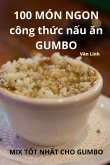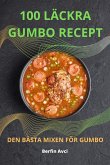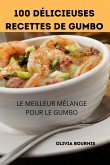Gumbo is the essence of Creole and Cajun cooking, the mandatory dish on every restaurant menu and the heart of home cooking. It showcases the best indigenous shellfish as well as local sausages, poultry, wild game, and spices. It originated in Louisiana in the eighteenth century and derives its name from either the Bantu word for okra (gombo) or the Choctaw word for filé (kombo). Both okra and filé, which is ground sassafras leaves used by Native Americans, serve as thickeners for gumbo, along with the roux, a base of flour browned in oil. The most common thickener is the roux, which is similar to gravy. The extent to which it is browned determines the color of the gumbo. Local cooks often take it to a dark-brown color that gives the finished product a deep and robust flavor. Traditionally, onions, celery, and bell pepper (known as the trinity of local cooking) plus garlic are sizzled in the roux, and stock is added to make a Gumbo. Ingredients ranging from shellfish to poultry to wild game create the type and taste of the gumbo. Seasonings such as cayenne pepper, thyme, and bay leaf alter the flavor of the dish to please the cook, and the gumbo is served in bowls over rice. The most distinctive styles of gumbo are Creole (New Orleans) and Cajun (southwestern Louisiana). Creole uses tomatoes, and Cajun does not. Therefore, one is brown and the other is a reddish brown. Creole gumbo tends to have a thinner base, while a Cajun gumbo is heartier, darker and sometimes thicker, and is more apt to use game such as wild ducks. In south Louisiana, gumbos are served on all tables, rich or poor, and in most restaurants, upscale or otherwise.
Hinweis: Dieser Artikel kann nur an eine deutsche Lieferadresse ausgeliefert werden.
Hinweis: Dieser Artikel kann nur an eine deutsche Lieferadresse ausgeliefert werden.








